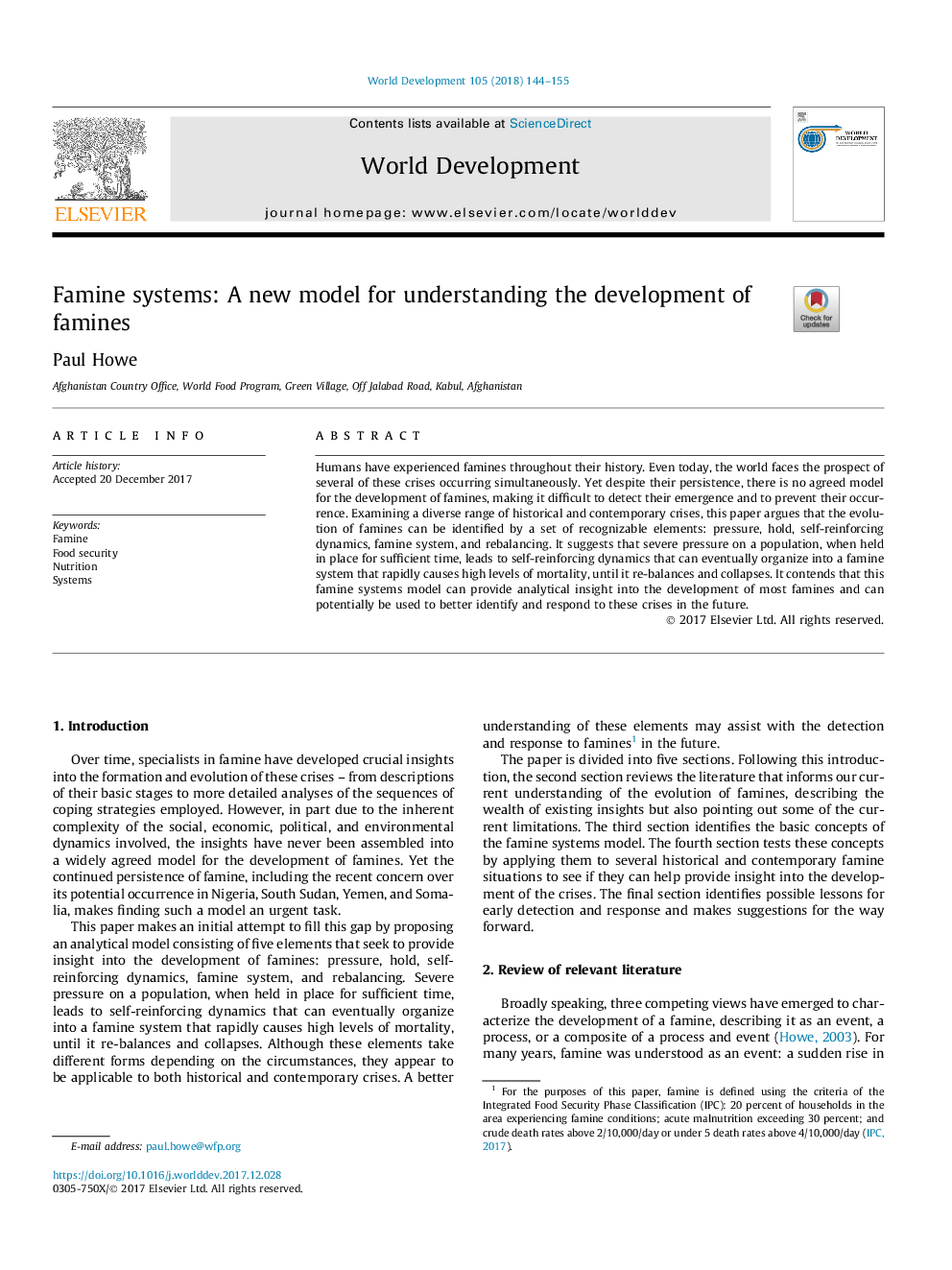| Article ID | Journal | Published Year | Pages | File Type |
|---|---|---|---|---|
| 7392192 | World Development | 2018 | 12 Pages |
Abstract
Humans have experienced famines throughout their history. Even today, the world faces the prospect of several of these crises occurring simultaneously. Yet despite their persistence, there is no agreed model for the development of famines, making it difficult to detect their emergence and to prevent their occurrence. Examining a diverse range of historical and contemporary crises, this paper argues that the evolution of famines can be identified by a set of recognizable elements: pressure, hold, self-reinforcing dynamics, famine system, and rebalancing. It suggests that severe pressure on a population, when held in place for sufficient time, leads to self-reinforcing dynamics that can eventually organize into a famine system that rapidly causes high levels of mortality, until it re-balances and collapses. It contends that this famine systems model can provide analytical insight into the development of most famines and can potentially be used to better identify and respond to these crises in the future.
Keywords
Related Topics
Social Sciences and Humanities
Economics, Econometrics and Finance
Economics and Econometrics
Authors
Paul Howe,
